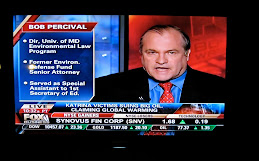From January 3-7, I attended the 111th annual meeting of the American Association of Law Schools in San Francisco. Several panels at the conference focused on how the Trump administration is likely to seek legal and policy changes in various areas, but few speakers could be confident in their predictions. One of the most interesting panels was a “hot topics” program on the Juliana v. United States litigation in the U.S. District Court for the District of Oregon. Brought on behalf of 21 youths from across the U.S., the lawsuit argues that the federal government has violated younger generations’ constitutional rights to life, liberty and property and failed to protect essential public trust resources. Having survived a motion to dismiss, the plaintiff are hoping to go to trial in fall 2017 to litigate whether the federal government has done enough to combat climate change. Legal documents filed in the litigation are available online at: https://www.ourchildrenstrust.org/lawlibrary/
On Thursday January 5, I joined many professors from the Environmental, Natural Resoures, Energy and Animal Law sections on a field trip to the Greater Farallons National Marine Sanctuary off the coast of San Francisco. While few whales were sighted during the trip (this is not the time of their migration), it was a beautiful, sunny day for a boat trip.
Last week China’s National Energy Administration announced that the country plans to invest 2.5 trillion yuan ($360 billion) in renewable energy sources between now and 2020. This investment is expected to reduce emissions of CO2 by 1.4 billion tons, SO2 by 10 million tons, and NOX by 4.3 million tons. By 2020 installed renewable energy capacity is expected to account for 50% of new electricity generation. While this investment will help reduce coal consumption, coal will still constitute 58% of the nation’s energy mix by 2020. Zheng Xin, Renewables Investments Surge to Help Clear the Air, China Daily, Jan. 6-8, 2016, at 18.
China’s Supreme People’s Court has issued a new interpretation of how criminal prosecutions for environmental violations should be handled. The interpretation covers how courts should handle falsification of data, illegal dumping of hazardous waste, and how certain environmental crimes are defined. “It also provides direction on which crimes deserve severe punishment, such as interfering with investigations related to environmental emergencies, for example, and which would merit lighter punishment, such as if an individual took quick action to remediate or resolve a spill incident.” Michael Standaert, China’s Top Court Cracks Down on Environmental Crime, BNA International Environment Reporter, Jan. 4, 2017.
Despite increased emphasis on criminal prosecutions for environmental violations, China Youth Daily was critical of the outcome of a prosecution before the Yangzhou Intermediate People’s Court. Citing the prosecution of Dystar Group for discharging 698 tons of waste acid into a canal without pretreatment, the journal stated: “The damage done by its illegal deeds are beyond measurement, but the punishments for crimes related to environmental pollution are rather light in this country. The court only fined Dystar 20 million yuan, which is hardly enough to prevent it from committing similar misdeeds again, and certainly far from enough to mend the environmental damage it had already done.” The journal noted that the company had saved substantial amounts of money by failing to treat the waste and that there was no indication that any managers had been held criminally responsible, despite efforts to cover up the violation and destroy evidence. Quoted in “Heavier Penalties Will remind Firms to Meet Eco-Standards,” China Daily, Jan. 6-8, 2017, at 16.
Last week the Center for Biological Diversity (CBD) filed a notice of intent to sue the U.S. Department of Commerce for failure to take action to require Mexico to protect the totoaba, a small porpoise that is critically endangered. CBD is asking that Mexico be certified as a nation that has diminished the effectiveness of the Convention on International Trade in Endangered Species (CITES) pursuant to the Pelly Amendment to the FIshermen’s Protective Act.
Amazon Watch announced last week that Rosa Moreno, a community nurse in San Carlos, Ecuador who assisted victims of oil pollution, has died of cancer. In a statement dated January 4, Amazon Watch said: “She loved and served her community as they suffered from the many diseases caused by oil contamination, corporate and government neglect. She fought for justice in the case against Chevron. We vow to continue to seek justice for Rosa and all who have suffered from this abuse.”

















